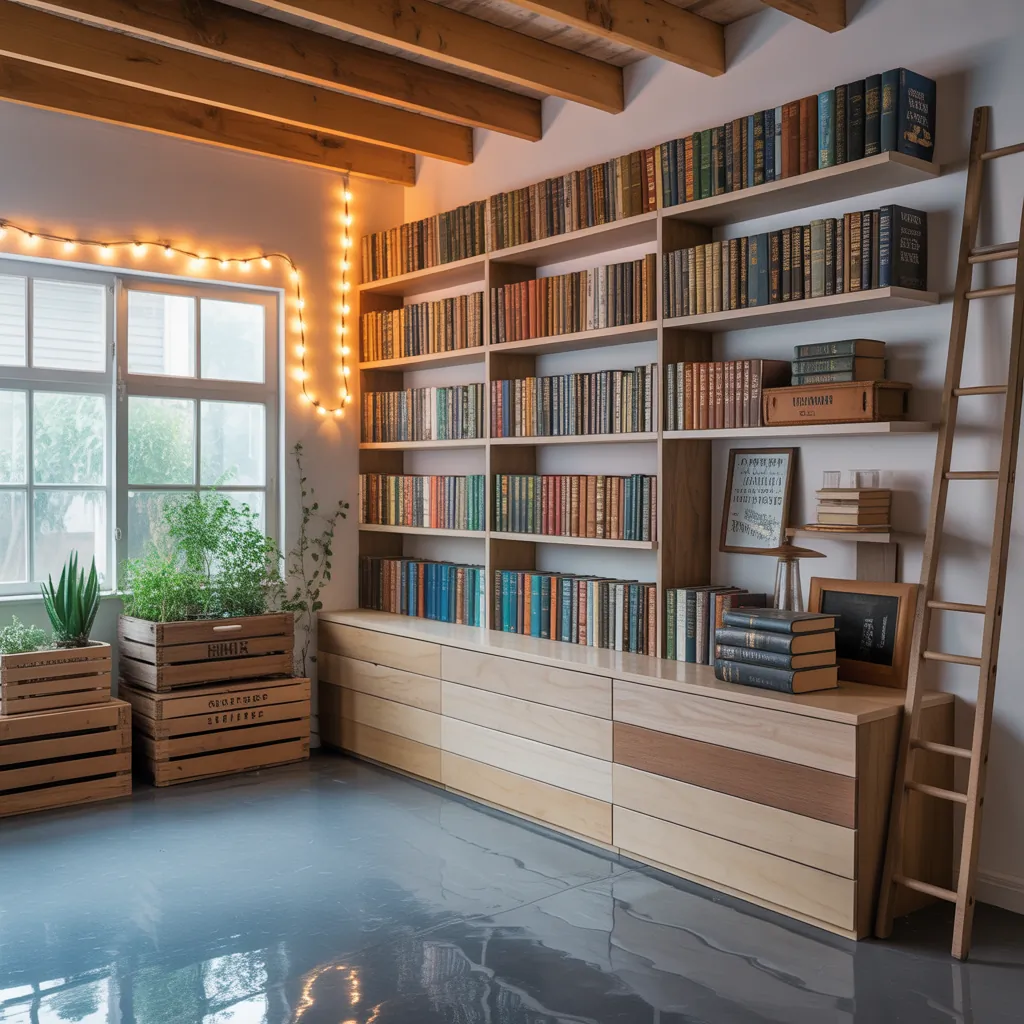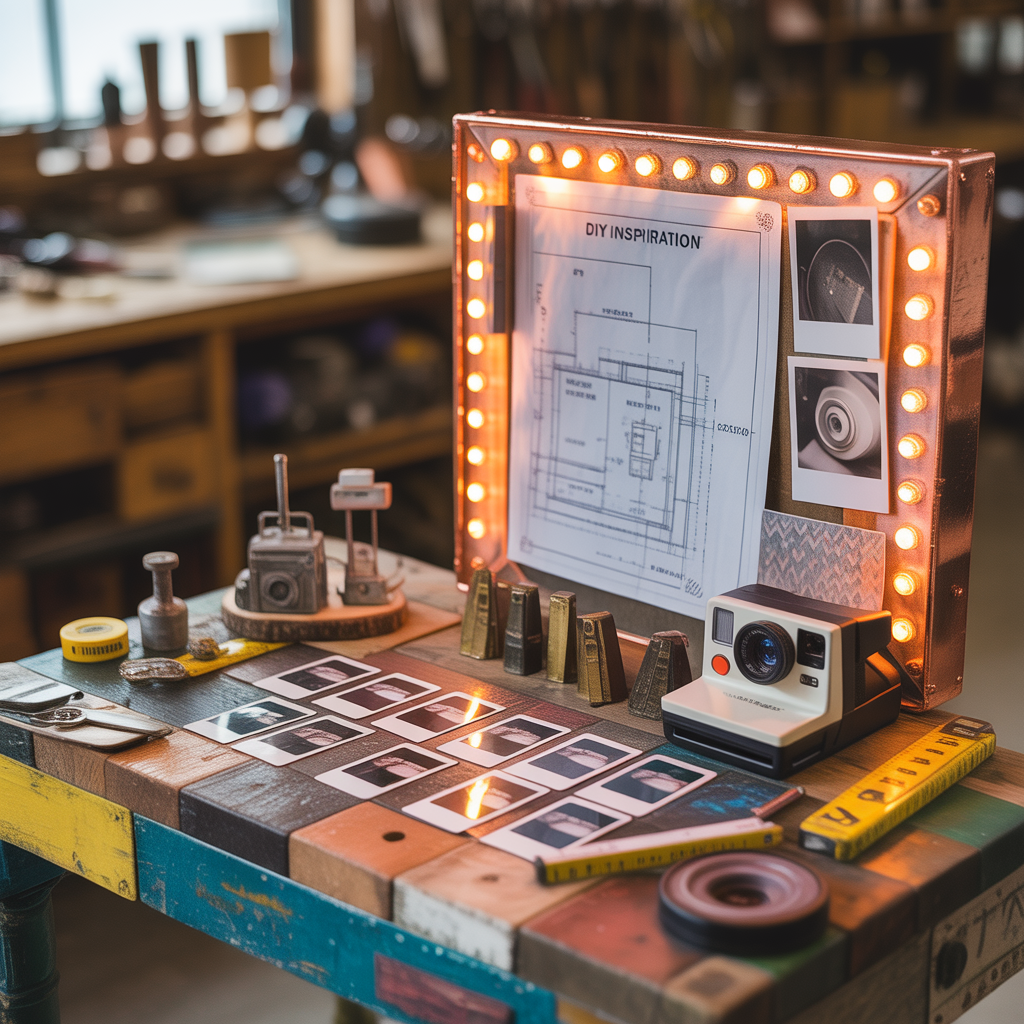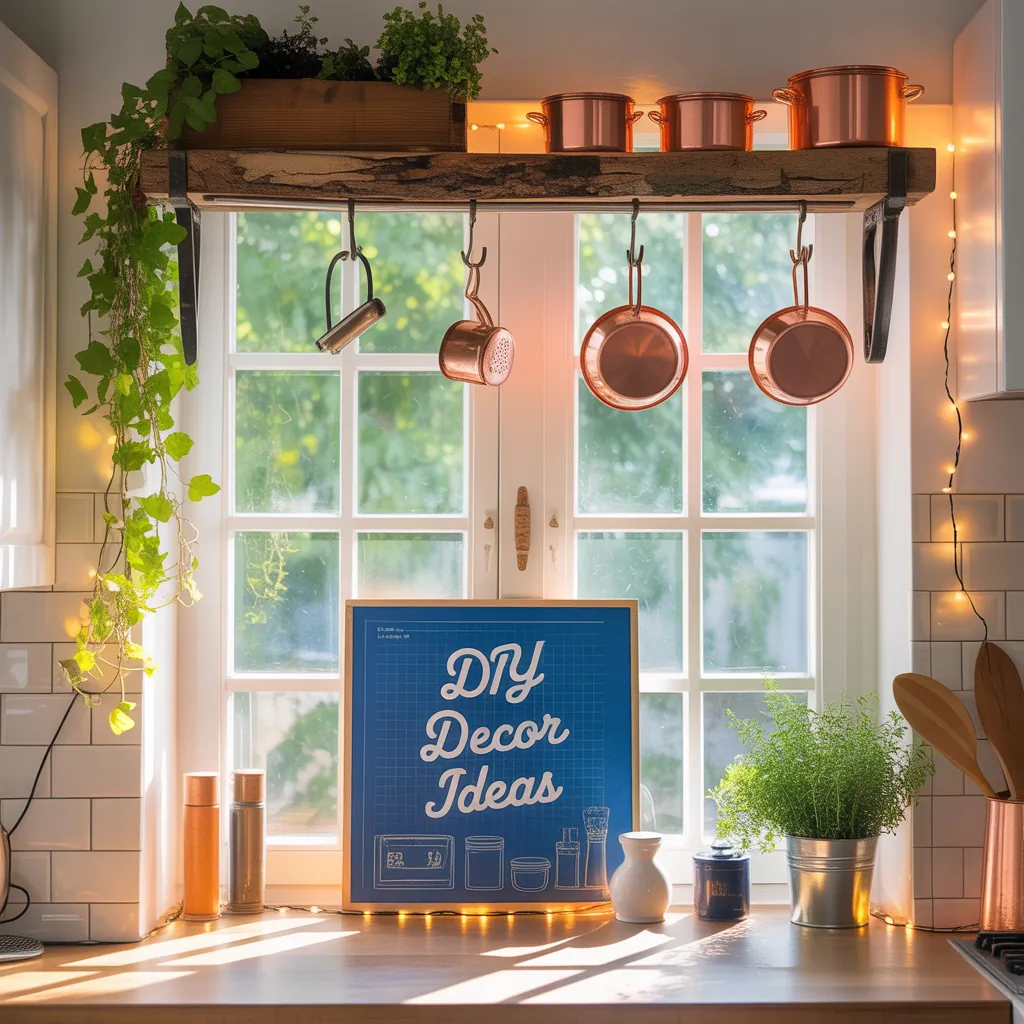Ever found yourself juggling a stack of books because you ran out of shelf space—or staring at a blank wall that seems to scream “I need a bookshelf”? If you love books but hate clutter, creative book storage can transform your piles into purposeful décor. Whether you’re tackling a small apartment, organizing a family room, or carving out a cozy reading nook, these practical DIY solutions will help you store more books with style.
Why creative book storage matters
Books are more than information—they’re part of your home’s personality. Thoughtful storage preserves your collection, opens up space, and becomes an intentional design element. From wall-mounted ledges to built-in shelves, there are creative storage ideas that suit every aesthetic and budget.
Ideas for creative book storage
Below are ten tested ideas, each with practical tips, materials, and difficulty levels. Use them as inspiration or follow the step-by-step mini-projects.
1. Floating shelves for a modern look
Floating shelves create clean lines and keep books accessible without heavy visual weight.
- Materials: pine or plywood boards, brackets (concealed), screws, paint/stain.
- Steps: Measure, mark studs, cut boards to length, attach concealed brackets to studs, slide shelves onto brackets, style with books and décor.
- Tips: Mix horizontal stacks and vertical rows for visual balance; use bookends or small plants to prevent tipping.
2. Under-stair built-ins: maximize hidden space
Under-stair book storage is a high-impact built-in solution that adds resale value and a custom feel.
- Materials: MDF or plywood, trim, paint, adjustable shelving hardware.
- Steps: Measure cavity, frame shelving, install adjustable supports, add trim for a polished look.
- Tip: Consider a lower drawer unit for oversized books or a pull-out step for kids’ access.
3. Repurposed dresser or sideboard converted into a bookcase
Turn an old dresser into a low bookcase—great for living rooms or Hallways. Remove a few drawers, add fixed shelves, and paint for a fresh finish.
4. Book nook shelving: use a corner creatively
Create a cozy reading nook by installing corner shelves or a curved bookcase. Add cushions and layered lighting to complete the space.
5. Stair-step book display for small collections
A simple stair-step shelf (leaning ladder bookshelf) is a quick build and showcases favorite reads. It’s ideal for renters because it often requires minimal wall damage.
6. Built-in headboard shelves for bedtime reading
Transform your headboard into functional library space—short shelves for paperbacks, slots for glasses, and a charging nook for devices.
7. Under-bed book storage and rolling bins
Use shallow rolling crates or custom drawers under the bed for seasonal reads, kids’ books, or overflow. Add casters and label the sides for easy access.
8. Hidden book storage — secret compartments
Install a shallow hidden cabinet behind artwork or a false panel to keep valuables or delicate volumes dust-free. This is perfect for rare books or private collections.
9. Vertical magazine racks and wall pockets
Mount vertical racks for magazines and slim paperbacks. These are budget-friendly and easy to DIY using plywood or reclaimed wood.
10. Multi-functional furniture: benches and ottomans
Build or buy benches with interior storage to hold oversized books. Dual-purpose furniture saves space in studios and living rooms.
Practical DIY tips for successful book storage
Whether you pick floating shelves or built-ins, follow these real-world tips to ensure long-lasting results.
- Measure twice, plan once: Know the depth of your books (paperbacks vs. hardcovers) before building shelves.
- Anchor to studs: Always secure heavy shelves into studs or use proper wall anchors for safety.
- Adjustable shelving: Use adjustable brackets for flexibility as your collection grows or changes.
- Protect with finish: Seal wooden surfaces with polyurethane or paint to prevent wear and warping.
- Consider humidity: Store rare or antique books in climate-stable areas away from direct sun and dampness.
- Label and categorize: Use subtle labels or color-coding for large collections to make retrieval faster.
Design inspiration: styles to match your decor
Pick a style and tailor the storage to your room:
- Minimalist: Slim floating shelves with monochrome book covers and negative space.
- Rustic: Reclaimed wood crates stacked with visible joinery and metal accents.
- Mid-century: Low, linear sideboards with tapered legs and hidden compartments.
- Eclectic: Mix baskets, open shelving, and colorful spines for a collected look.
- Scandinavian: Light wood, white backs, and airy spacing for a calm library vibe.
Small-space solutions and smart organization
For tight spaces, consider:
- Tall, narrow shelving to utilize vertical space.
- Door-mounted racks for paperbacks and slim guides.
- Stacking cubes that can be reconfigured as needed.
- Rotating book carts for moveable, compact storage.
Ideas for creative book storage: quick projects to try this weekend
Try these two simple weekend projects:
Weekend Project A — DIY book ledges
- Buy 1″x8″ pine boards and cut to desired lengths.
- Route a lip on the front edge or glue a small strip to hold books.
- Sand, paint, and mount to studs with concealed brackets.
Weekend Project B — Crate stack bookshelf
- Source identical wooden crates (new or reclaimed).
- Stack and screw them together in your preferred configuration.
- Paint or stain; anchor the tower to the wall for safety.
Maintenance and longevity
Keep your book storage functional by dusting regularly, rotating books seasonally, and checking anchors and hardware annually. Replace or repair sagging shelves before they damage your books.
Frequently Asked Questions
Q: What are the best book storage ideas for small apartments?
A: Use vertical solutions like tall, narrow shelving, floating book ledges, door-mounted racks, and under-bed drawers. Multi-functional furniture (benches or ottomans with storage) also works well in compact homes.
Q: How deep should shelves be for books?
A: Standard shelves are usually 10–12 inches deep to accommodate most hardcovers and paperbacks. For paperbacks only, 8–9 inches can be sufficient. Consider a deeper shelf or adjustable depths if you have oversized coffee-table books.
Q: Are floating shelves strong enough for heavy books?
A: Yes, if you mount them to studs or use heavy-duty anchors. Choose thicker boards (3/4″ or thicker plywood) and concealed brackets rated for the expected load. For very heavy collections, consider fixed shelving with vertical supports.
Conclusion — Bring your books to life with creative book storage
There’s no one-size-fits-all answer, but with a little planning and these ideas for creative book storage, you can transform book clutter into a curated statement piece. Start with a small weekend project like floating ledges or a crate bookshelf, then scale up to built-ins as your skill and collection grow. Ready to tackle your next home upgrade? Check our DIY projects and home design ideas for more inspiration, or explore kitchen upgrades if you’re reorganizing cookbooks and culinary reads.
Happy building—and don’t forget to share your finished projects with fellow readers!



